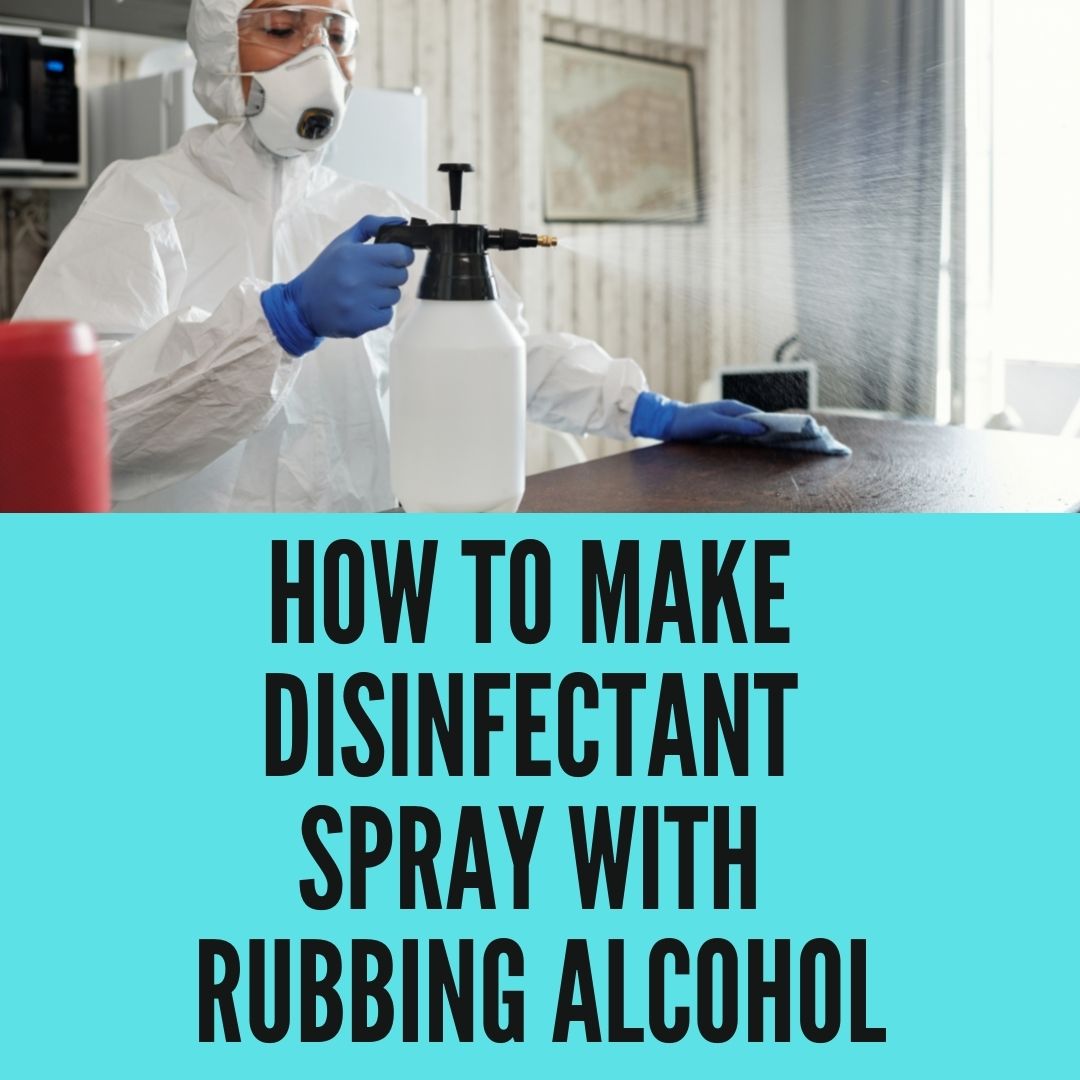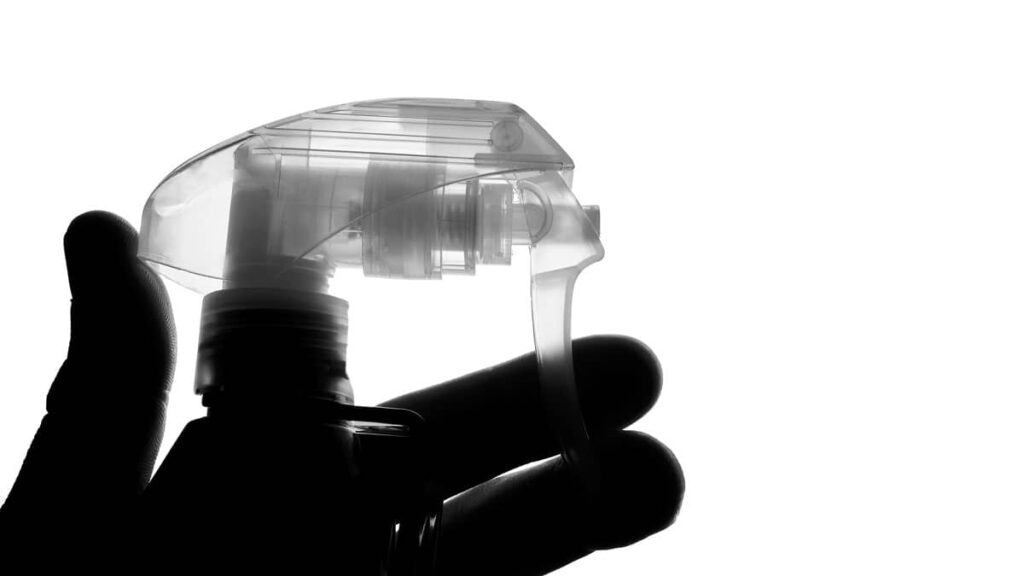
Last year saw one of the greatest shortages of disinfectant sprays and solutions that the world has ever seen. Stores across the country had empty shelves and backorders for sprays, wipes, and other household cleaners.
Even the hospitals faced a shortage, and top surgeons begged the public to only purchase what they needed so that everybody could have enough.
Unfortunately, not many people listened. If you’ve been having trouble finding your favorite disinfectant spray or can’t find enough to last you, then we’ve got you covered. Today, we’re going to teach you how to make a disinfectant spray with rubbing alcohol.
So how do you make a disinfectant spray with rubbing alcohol?
Here is a quick and easy way to make your own disinfectant spray with rubbing alcohol:
- You will need a 1-liter spray bottle, rubbing alcohol, water, and essential oils (optional).
- Fill the bottle halfway with water then add 300ml of the rubbing alcohol.
- Add 10-12 drops of essential oil if desired.
- Shake well and then use.

This common household item can be found at most grocery stores or pharmacies. If you’re unable to find it locally, then it can almost always be ordered online if you’re willing to wait a couple of days for delivery.
In addition to being an effective disinfectant, rubbing alcohol may also be a safer alternative to sprays such as Lysol, which can often be harmful to breathe in!
How To Make Disinfectant Spray With Rubbing Alcohol
I’m going to show you exactly how to save money and make your own disinfectant spray with everyday store-bought rubbing alcohol. Not only is it cheaper, but it’s also all-natural, so you won’t have to worry about headaches or that irritating cough ever again!
Ingredients:
The ingredients and supplies are very simple and can all be purchased at your local corner store or pharmacy. Here’s what you’ll need:
- 2 cups of rubbing alcohol (50% to 70%)
- .5 cup of white vinegar
- 1mL (20 drops) of your favorite scented essential oil
- 1 large spray bottle (20 oz. or larger)
- Funnel (optional)
Mixing
Start by pouring the rubbing alcohol into your spray bottle.
Then, pour in the vinegar. If you can’t find vinegar, you can just substitute it with more alcohol. Vinegar is a decent disinfectant, but in this case, it’s primarily used as a deodorizer. It’s not necessary, but it’s a nice additive!
Once you’ve poured the main two ingredients in, add about 20 drops of your favorite essential oil to add some scent to the mixture! I recommend using something that has a strong scent such as lemon/citrus, lavender, pine, or peppermint. In addition to all of these oils smelling great, they’re also known to have antiviral and antibacterial properties.
After mixing all of the ingredients in your spray bottle, put the top on and shake the mixture vigorously for 60 seconds. This will ensure that all of the ingredients mix into a single homogenous substance and increase the efficiency of the blend.
Here are some other posts that might interest you:
- Can You Use Rubbing Alcohol To Clean Glass?
- Is Rubbing Alcohol The Same As Hand Sanitizer?
- Isopropyl Alcohol Alternatives For Disinfecting
- How To Make Your Own Rubbing Alcohol At Home
- Best Rubbing Alcohol for Cleaning
Are There Any Concerns When Using DIY Disinfectants?
The great thing about the homemade disinfectant spray is that it’s made from all-natural ingredients. For the most part, it’s safe to breathe in and shouldn’t cause any topical skin irritation if you get it on your hands. It’s also safe for your pets, so you can even spray it on their bedding to get rid of lice, fleas, and other bacteria!
The main concern that you should be aware of when making a disinfectant spray with rubbing alcohol is to watch out for paint. You should not allow rubbing alcohol on car paint as it’s a powerful solvent and can easily dissolve paint if it gets a chance to soak in through the protective clear coat.
Apart from this, though, you shouldn’t have anything else to worry about.
Does DIY Disinfectant Spray-Work As Well As Name-Brand Products?
Let’s be honest- most Do-It-Yourself products don’t always work as advertised. Sure, they all promise good results, but how many actually work? So, I completely understand your skepticism when somebody claims that they can make an effective disinfectant spray for half the price of Lysol.
That being said, though, isopropyl rubbing alcohol is just as effective at killing germs and viruses as name-brand competitors. Don’t believe me? Here’s how it works.
Rubbing alcohol is a mixture of water and pure alcohol. Once the blend makes contact with a pathogen, the water is able to break through the germs’ cell membrane, and the alcohol then breaks apart from its hydrogen bonds, destroying the germs from the inside out.
In all cases, your homemade mixture will be just as effective if not more effective than the name-brand products you’re used to.
Does It Matter What Type of Rubbing Alcohol I Use?
Although there are different kinds of rubbing alcohol, they all function relatively the same. I recommend using the most popular type- isopropyl rubbing alcohol or isopropanol for making the disinfectant spray. If you can’t find this, then you should be able to find ethanol (or grain alcohol).
As a last-case scenario, you can always make your own homemade ethanol or use a high-proof vodka!
The only word of caution that I’d mention is that you should avoid using methyl alcohol (methanol) or denatured alcohol. Although these are both common forms of “alcohol,” their chemical structure is very toxic to the human body, both topically and inhaled.
Conclusion
All of the latest models and predictions have indicated that the world is not yet safe from COVID-19. Even though there are FDA-approved vaccines, they are being distributed slower than expected and could cause side effects that some people aren’t willing to risk. This means that it’s more important than ever to make sure that your work and living areas are sanitized.
Historically, Lysol has been the most popular form of disinfectant spray. Upon contact with germs and viruses, it starts to break down their cell walls, eventually destroying them altogether. However, this popular spray has been quite hard to find in recent months as it has sold out at record rates.
In addition to it being hard to find, many people claim that commercial disinfectant sprays can give them headaches, make them cough, and cause other annoying side effects. To be completely honest, they’re also a bit overpriced. You’ll often pay upwards of $5 for a small canister that’s only half disinfectant and half propellant spray, meaning you’ll go through it really fast.

My name is Logan, and I’m a 36-year-old dad who owns a small pressure-washing company in the suburbs of Atlanta, Georgia. My main goal with rubbing-alcohol.com is to show you how versatile isopropyl rubbing alcohol can be! I hope. You find it useful.
